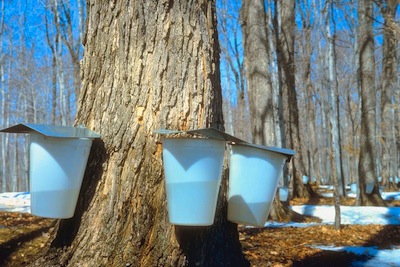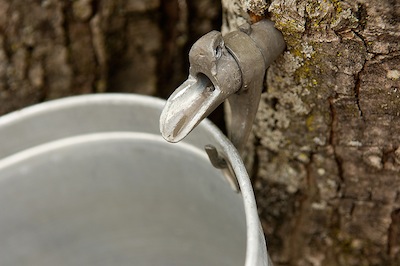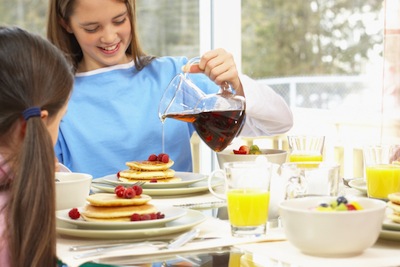
Tapping Trees, Health Benefits, and Maple Syrup Grades
ADVERTISEMENT
To Farme's Almanac~ Such a beautiful poem as the others are; thanks so much for posting; I really enjoy these daily poems; (and the lovely pictures)~
Deep down within the frozen brook
I hear a murmur faint and sweet, And lo!
The ice breaks as I look,
And living waters touch my feet.
–Jane Goodwin Austin (1831–94)~
Syrup season is exceptionally early around St. Paul, MN this year. Normally I tap trees in early March. This year I tapped January 31! By February 5 I've collected 25 gallons of sap already from 14 trees (combination of hard maple, red maple and silver maple - mostly silver). With such an early start, how long of a season is possible? If I have multiple freezing to 40s days throughout February, March and mid-April, can I continue producing or will my taps "heal over in place"? I've only placed 1 tap in my neighbors' large trees and multiple in one of mine. Should I wait to place more in my neighbors' trees, or place more now?
Hi Allan,
The length of season will depend on that alternating freeze–thaw cycle necessary for sap flow. Since it is so early in the winter, there is a good chance that the weather conditions will change and get colder and the sap may stop flowing—only to return when the ideal conditions present.
Sap should flow if the conditions are right in the months of February, March, and April. Taps should remain viable throughout the season if proper care was taken during the installation process. If taps “heal over” during the season it is typically a sign of the presence of bacteria and the tree will attempt to prevent the microbes from entering by sealing off the wound (tap hole).
In terms of tapping more trees, that is up to you. As we said above, the conditions for sap flow may not be consistent for the rest of the season as temperatures can drop given the Minnesota winters. Some experts encourage producers to avoid tapping too early during a warming cycle early in the season for what might be a short run and small amount of sap. You could look at the extended forecast and base your decision on what the temperatures look like in the coming week or two.
I tapped 4 of my trees early this year to try to get some autumn sap. 2 trees are doing fine, and 2 are not dripping at all. 1 of the trees that is not giving any was a good producer last year. The other is has never been tapped before, but it certainly more than big enough.
Is there a reason why some of the trees are flowing and others aren't? Should I re-tap them, or will the season moving along get them going in time?
Thanks!
Hi Dan,
While sap will run in the fall under the right conditions, to maximize production it is best to tap in the late winter/early spring depending on your location and the weather conditions (outlined above about the alternation cold (nighttime) and warm (daytime) temperatures).
As to why a couple of your trees are running and the others are not, temperature patterns in trees can vary considerably throughout a season and each one can react differently to the environmental changes happening around them. You can certainly try re-tapping them to see if the sap will start flowing. If the sap does not begin to flow out of your taps, try again in the spring.
You can also reach out to your local maple producers group to connect with others to see what kind of results they have seen and for any tips that are specific to your area.
Thank you so much. Since you answered, 1 of them started flowing really well and the other still hasn't done anything, so your answer makes sense. I think I'll just wait and see how it goes!
I tapped my overly large maple in 4 spots and no syrup is coming out
You should tap the trees when the sap is running heavily. That would be in the spring, about the time the temps are below freezing at night and above freezing during the day.
In your article the depth you mentioned for drilling a hole into a tree is not accurate. The depth should be 2 inches. Spiles should be sized at either 5/16 or the old style 7/16. Most producers are now using smaller tap holes on trees and getting the same amount of sap, because they are using tubing systems and vacuum systems. Some of these are run on 5/16 or 3/16 tubing. You do not need to tap only the south side of the tree nor do you need to tap over a large root or under a large branch. The tree needs to be a minimum of 10" in diameter for 1 tap 18 - 20 inches for 2 taps.
Make sure to have lots of fun when boiling and never walk away from the pot, it can go from sap to syrup real fast.
How hard is identifying Maple trees for tapping? Are there any look a likes that could potentially be poisonous? I am aware that other trees produce a good syrup like black walnut etc., Thank you, I’m really interested in this.











